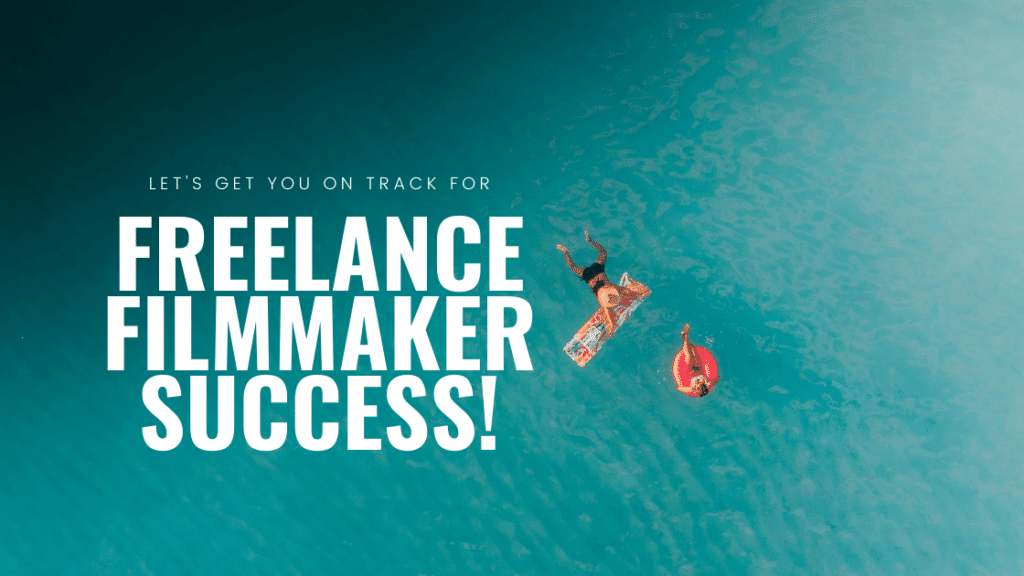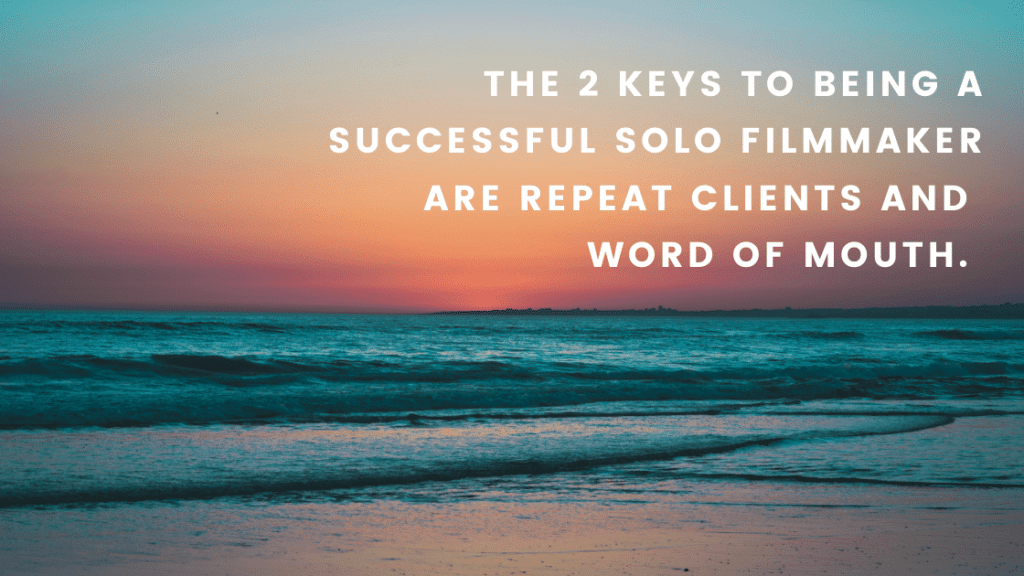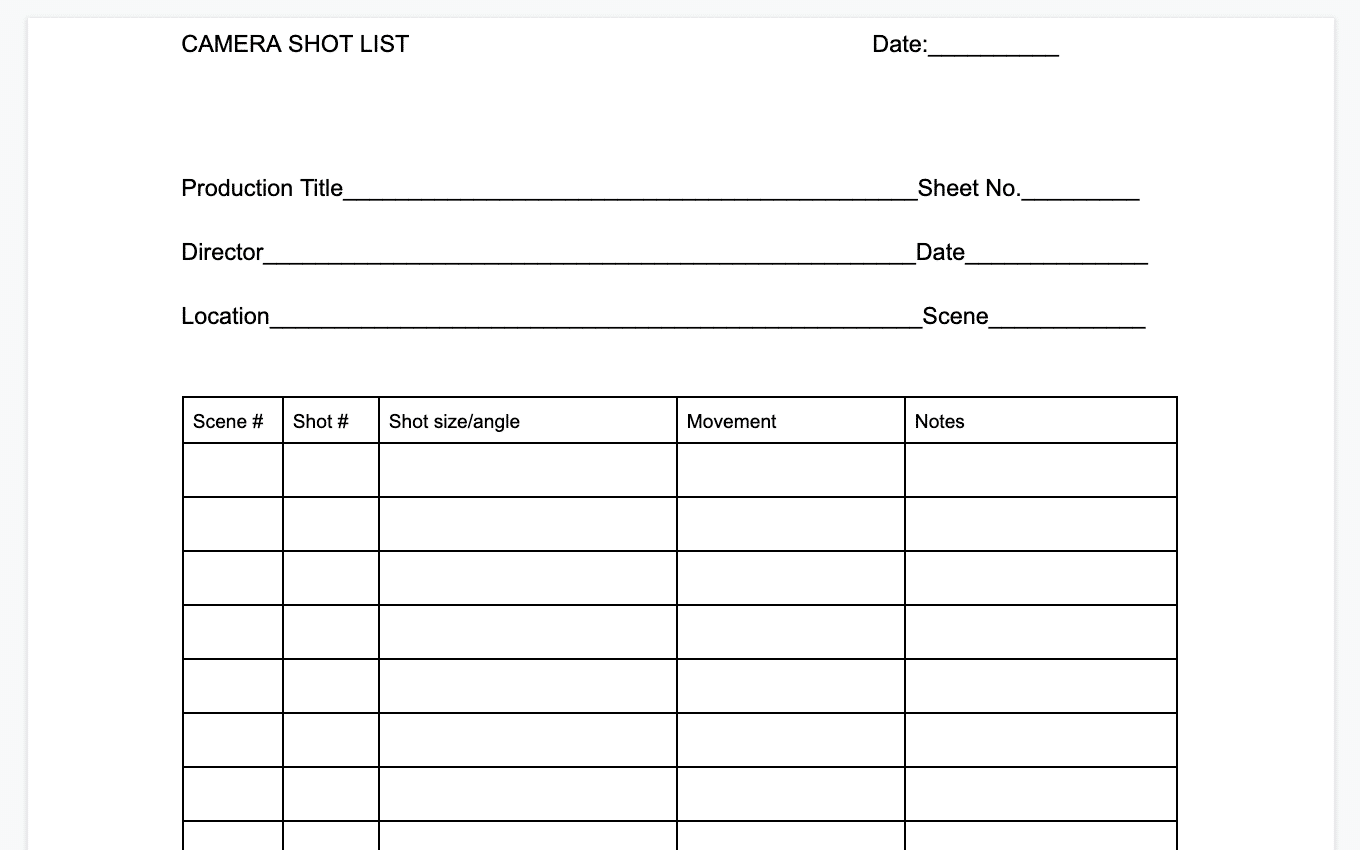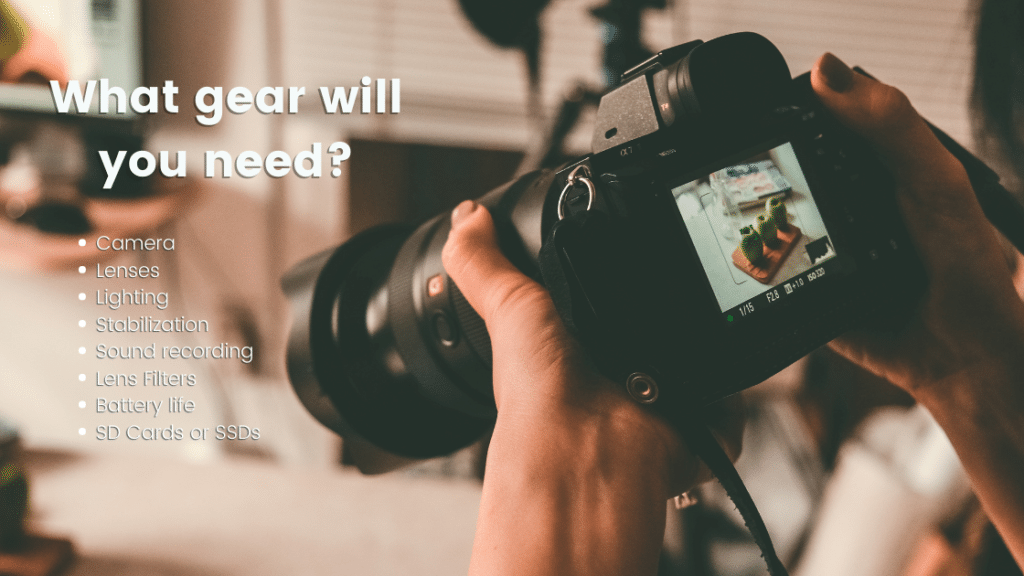BY COLETTE NICHOL, SOLO FILMMAKER & STORY STRATEGIST
Estimated reading time: 12 minutes

Being a freelance filmmaker is one of the most rewarding things you can do with your filmmaking skills.
And you can reinvest that income into your filmmaking gear and education.
If you’re a creative person—maybe even an artist—and you’re building a filmmaking skillset, then the natural progression will be to do client gigs. And there are so many benefits to working with clients.
And you can reinvest that income into your filmmaking gear and education.
Nothing I’ve done in my life (from studying clowning to living in Ecuador for five years!) has been as incredibly transformational or satisfying as becoming a freelance filmmaker.
So, I can’t wait for you to have this experience as a filmmaker.
Table of contents
- Become a Freelance Filmmaker
- Step 1: Identify the Client’s End Game
- Step 2: As a Freelance Filmmaker, Be a Fearless Idea Curator
- Step 3: Get your Client Paperwork in Order
- Step 4: Storyboard and Script It
- Step 5: Create your Shot List
- Step 6: Plan the Gear and Location
- Step 7: What Could Possibly Go Wrong?
- Step 8: Schedule Your Edit
- Step 9: Get Talent/Image Releases If Needed
Become a Freelance Filmmaker
If you’re just starting out with your freelance filmmaker career and you’re planning for your first gig, you might be feeling a little worried that you’re going to miss something. And frankly, you probably will miss something—and that’s okay!
But this post will give you a much better chance to nail the major elements of your first client gig so you can make your client happy, have an easier end-to-end production experience, and keep growing your business!
By the way, even if you’re not interested in doing gig work, these steps apply to any artistic and non-lucrative projects as well.
If you’re doing a project for free for your favorite local charity, every single one of these production steps will apply to you too.
First, you’re able to keep improving your skillset while making a difference in someone’s life or business. Second, you’ll gain more experience working with subjects. Third, when you work with clients, they have skin in the game. So the working relationship is much easier than trying to convince family members to let you practice on them. And finally, you get paid to do something you love.
If you follow these steps, you’ll be able to easily and effectively create client projects that make you happy and your client happy so that you can start building your freelance filmmaker career!
So in this post, I’m going to go over my production process.
I truly hope it helps you. One thing that has allowed me to go full-time as a filmmaker and run my own business is that my clients usually want to work with me again. The only reason they typically don’t turn into repeat clients is if they simply don’t have more projects to complete.
The absolute KEY to running a business as a freelance filmmaker is having repeat business and/or word of mouth.
If you’re going to become a wedding filmmaker for example you’re probably not going to have repeat business. I mean, you’re hoping those folks are going to stay married, right? But you could get a lot of referrals from the bride and groom. But if you’re going to start working with brands, then your business can become full-time relatively quickly. All you need is a couple of businesses who want to work with you a few times per year, and BOOM, you’ve got a full-time business.

If you want repeat clients, then you need to make sure that the production process feels easy and seamless for the client and you also give them great results. So, here are my 9 steps to preparing for any important client gig. Well, in other words, all clients gigs…because they are ALL important!
9 Steps to Preparing for Important Client Gigs as a Freelance Filmmaker
Step 1: Identify the Client’s End Game
First and foremost, identify what the client wants.
Make sure you know what they are trying to achieve in these main areas:
- What look are they going for? Do they have an example video?
- What feeling do they want the viewer to have?
- What action do they want the viewer to take?
- Where will they be hosting/embedding/sharing the video? i.e. Final destination?
- Does the video need a CTA? That stands for Call to Action. Many brand videos have a call to action where you’re asking the viewer to do something. Is that required for this video or would it be useful?
If you know what your client wants to ACHIEVE with their final video or microfilm then you will be much better able to achieve those goals and end up with a long-term client.

Step 2: As a Freelance Filmmaker, Be a Fearless Idea Curator
One big mistake that I see is that video production companies and freelance filmmakers don’t tell their clients the truth. If a client comes to me with an idea that will not work or isn’t going to help them achieve their goals….well, I tell them. Nicely. I make sure that I have a solution i.e. an alternate path.
But I’m not going to go blazing off into the woods with an idea that won’t actually help my client achieve their goals.
That’s pure madness.
So two things:
- Bring ideas to the table that will make the project better.
- Let your client know if something isn’t a good idea and offer them a better solution.

Step 3: Get your Client Paperwork in Order
Never ever go off into the abyss of a client relationship without your paperwork in order.
Here are the basics of what you need to do:
- Create a proposal that covers what you will do and achieve with the project. It can be a simple one-pager for something that’s just a few thousand dollars. For a project that’s five figures or more, it should be a multi-page proposal. This is all about clarity and getting the relationship started with defined scope and boundaries.
- Create a contract that includes the payment process and dates, how to deal with cancellations of the contract, and the scope of the project.
- Get that contract signed BEFORE you start work! And make sure the contract refers back to the original propsal. (I use Dropbox Pro which works with HelloSign to do online signatures.)
- Send an invoice to your client for the Retainer or Deposit. Also, never start a project without a retainer or a deposit. Always get some money up front. Your client MUST have skin in the game. (I use Freshbooks for this.)

Step 4: Storyboard and Script It
This is optional. As a freelance filmmaker, you don’t always have to storyboard or script a video or microfilm. Sometimes if you’re creating a more docu-style piece that isn’t going to be stylized, then you don’t need a script or storyboard at all. All you need is a proposal that everyone agrees upon and then you can go make your art.
But, if you’re creating something that has to fit into a specific format and has multiple stakeholders, then you’ll likely need a storyboard and/or script.
To create a script, I use Google Docs. This allows me to collaborate with my clients. I often will create the script template in Google Docs, then get them to either fill out the template or put ideas in. From there, I’ll create the rough draft and final draft of the script.
You can create a script format in Google Docs by creating three columns. Use the center column for the script. Put your direction or notes on the side columns. If you use 12 pt courier font, then every page of your script will be about 1 minute of screentime.
Step 5: Create your Shot List
Next, it’s time to create your shot list.
This is one part of the filmmaking process that isn’t negotiable. You’ve got to know what you intend to shoot. If you’ve already got your first client, then you probably already know how to do this.
But if not, here’s what I recommend:
- First, brainstorm all the shots you want including shot sizes and angles.
- Then think about any money shots i.e. big splashy shots that look amazing and will help tell the story.
- Next think about any shot sequences you could get. Don’t just think about b-roll. Think about shots that connect together.
- Next think about any interesting in-camera transitions you could get to help tell the story.
- Finally create a shot list with the shot size, the shot angle, and any notes. And make sure you star the ones that are non-negotiable i.e. you must get them. Becuase it’s not uncommon to run out of time, you need to know which shots you can cut and which you can keep.

Step 6: Plan the Gear and Location
In order to know what gear you’ll need, you need to know the location and the style of the shoot. You’ll also need to know what shots you need to get.
You can’t really start planning gear until you know the pros and cons of the location and you know what you need to capture.
I often get asked what the best camera for filmmaking or video production is. Or sometimes I get asked what the best lenses are for video. These questions are understandable. Nobody wants to make a buying mistake. But when it comes to individual client jobs, you may find that renting gear is required because each job is different. Some jobs might require that you use a long lens to capture close-ups and medium shots from a far distance. So you might need to rent a 100mm lens or a 100-300mm zoom. While other jobs may require a high-quality mid-range zoom so you can get tons of shots quickly and easily.
The main thing to pay attention to when doing a location scout is the lighting and sound issues.
You can even find out the path the sun will take by using an online Sun Tracker app. Then you’ll know if your spot will be in the sun or shade when you’re shooting. From there, you’ll decide if you need lights and what lenses you’ll need.
If you want to learn more about film lighting, check out this blog on film lighting techniques. And I’ve also written a post on the types of film lighting and cinematic lighting in general.

Step 7: What Could Possibly Go Wrong?
Practice, in order to prevent problems.
That’s the key to having a show that runs smoothly.
It’s okay to take on a job that’s new or something you haven’t done much. But make sure you know what could possibly go wrong. Make sure you know where YOU could screw things up. Then practice, practice, practice.
If you identify all the potential issues and come up with solutions in advance, you’ll be more likely to achieve your goals on the day of the shoot. This includes all the zones where you could potentially make a mistake.
Here are some zones where I’ll practice if I’m doing something new:
- practice using a new camera
- practice using a new stabilization method or gear
- practice with new audio gear
- practice if the lighting circumstances are different from normal i.e. shooting at night for first time
- practice using new lighting gear
- practice using new lighting techniques
- practice if it’s a new shooting style i.e. shooting an interview for the first time or doing a timelapse

Step 8: Schedule Your Edit
Next, make sure you schedule your edit into your calendar so you can get it done. And don’t schedule a whole bunch of stuff in that same time frame. Your edit will usually take 20-40 hours to complete depending on what you’re doing. This is for short things, of course. If you’re shooting a feature, well, schedule in a year of your life. But for short brand videos and wedding films etc, you can figure about 20-40 hours for the edit.
And of course, it will take longer if you’re going to be messing around with something new like animation.
Put that in your agenda and don’t let anything derail that.
Step 9: Get Talent/Image Releases If Needed
Last, the most boring thing. If you’re shooting an event, then make sure the event organizers are getting the participants to sign a release form letting the event organizer use their image in any advertising or other media. This should be built into the sign-up process for the event if possible.
Now….that’s it! You’re ready to go!
With these nine steps, you should be able to run your shoot efficiently and achieve your client’s goals. And then, fingers crossed, you’ll get more work from the same client!
Before you go, if you need some helping scripting, make sure you download the script template here >
Learn Filmmaking and Get the Gear Guide
If you’re interested in learning filmmaking, check out the Solo Filmmaking Mentorship Program I created for aspiring filmmakers and video creators. It usually goes live once per year. So I recommend getting the Story Envelope Filmmaking letter which comes out a couple of times per month. That way, you can get filmmaking tips for free and find out when the filmmaking course is going live again.
Also, before you go, grab the Solo Filmmaking Gear Guide and Checklist for Beginners.

About the Author
Hi! I’m Colette Nichol. I’m a solo filmmaker and story strategist based out of rainy Vancouver, Canada. I’ve been making videos and micro films for small businesses and global brands since 2014.
Plus, I LOVE to help aspiring filmmakers pursue their dreams and start making films. This blog is designed to help you gain the knowledge you need to become a filmmaker.
If you want more, get on the waitlist for the Story Envelope Academy Solo Filmmaking Mentorship Program. It opens up one time per year and is the best way to become a filmmaking or video pro fast!
CLICK HERE to get on the solo filmmaking mentorship waitlist.